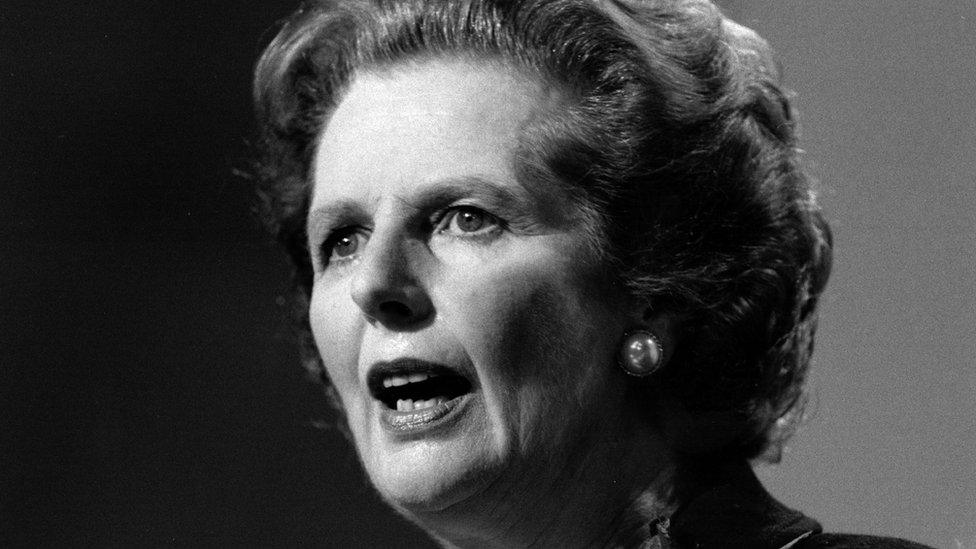Margaret Thatcher aides used Prince William in media war
- Published
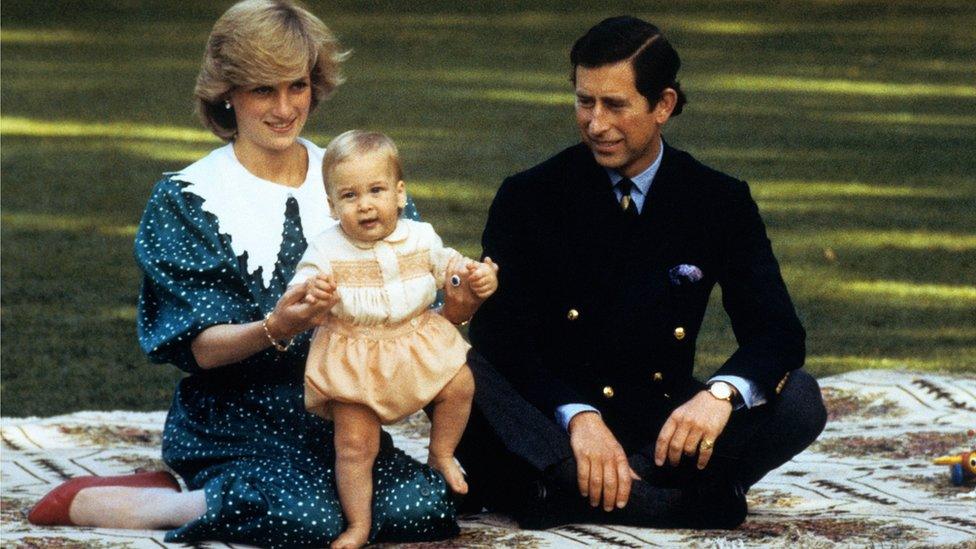
Margaret Thatcher's aides sought to exploit images of the infant Prince William to deflect attention from Greenham Common, files reveal
Margaret Thatcher's senior aides used photos of a baby Prince William to try to distract attention from a 1983 anti-nuclear march, official papers reveal.
Ministers feared protests might be so "widespread and powerful" that they could stop US cruise missiles from being based at RAF Greenham Common.
Newly-released files also show they were prepared for clashes between armed troops and objectors outside the base.
But they feared a public backlash if a protester was shot by US military.
To prevent that, Mrs Thatcher's ministers ordered British troops to be ready to tackle protesters as the American nuclear warheads were delivered in November 1983, documents released to the National Archives in Kew, west London, show.
The government worried it was losing the propaganda battle over nuclear weapons - particularly as 1983 was an election year.
At one point Foreign Secretary Francis Pym warned there was a risk of a mass movement and civil disobedience "so widespread and powerful that deployment of cruise would actually become difficult or impossible".
'Whippet or tortoise racing'
Ahead of a massive demonstration planned for Easter Monday, Mrs Thatcher's press secretary Bernard Ingham drew up a list of suggestions for getting media coverage and stealing some of the Campaign for Nuclear Disarmament's thunder, files reveal.
They included photographs of Michael Heseltine visiting the Berlin Wall, and research on the many bank holiday activities which Mr Ingham thought were likely to be more popular than going on a CND demo.
Ideas included "motoring, watching football, racing, fishing... pigeon or whippet or tortoise racing".
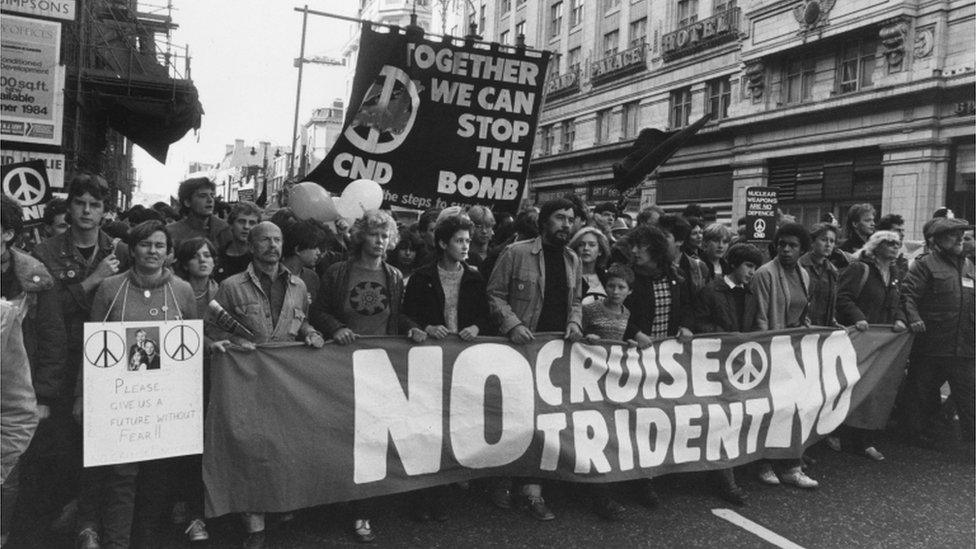
Files show Margaret Thatcher's government feared it was losing the propaganda war over nuclear weapons
There was also another suggestion which is redacted in the main copy of his memo in the file - a note says it has been "temporarily retained".
However, an unredacted copy of the same page appears elsewhere in the folder, from which it seems Mr Ingham's propaganda masterstroke was to release pictures of Prince William, then aged 10 months and on his first visit to Australia.
Mr Ingham's suggestion was acted on. When Prince Charles and Princess Diana landed at Alice Springs, a rather grumpy-looking William was duly brought down the aircraft steps by his nanny to be displayed to the cameras, before being quickly taken back on board.
'Covert forces'
The files also reveal the government was concerned about what would happen when the first US nuclear warheads were delivered by plane to RAF Greenham Common at the start of November 1983 - at what was one of the tensest periods of the Cold War.
BBC Rewind: Thousands of women protested about the arrival of US nuclear missiles at an air base in Berkshire
The women who opposed Thatcher
'I was there at Greenham peace camp'
In pictures: Greenham Common protests
A permanent "peace camp" had been set up outside the Berkshire base by a group of about 250 women in 1982, who made regular attempts to cut the perimeter wire and get into the base.
In a memo to the prime minister marked "secret", Michael Heseltine, the defence secretary at the time, outlined the government's plans.
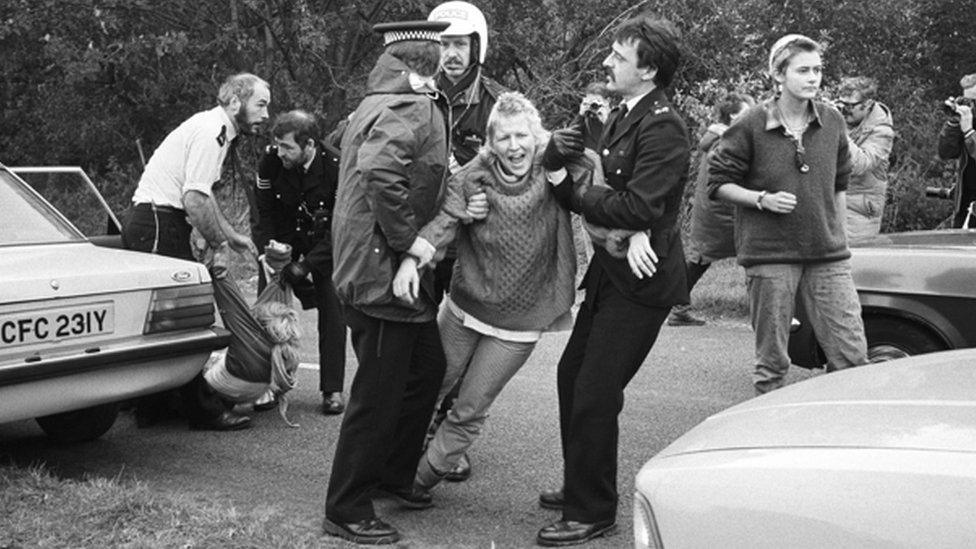
The activities of the women at the Greenham Common peace camp made headlines in the 1980s

Thousands of women were involved with in the camp over its 19-year existence
To avoid alerting demonstrators to the imminent arrival of the warheads, extra security was to be drafted in only at the very last minute, he said.
On the evening before the arrival of the warheads, "RAF personnel should be inserted covertly into the base to be reinforced by substantial numbers of Ministry of Defence police who would arrive very shortly before the first aircraft landed", he wrote.
Up to four infantry battalions would be held in reserve.
'Grave consequences'
The greatest risk, Mr Heseltine wrote, was when the warheads were being transferred between the aircraft and the bunker in which they would be permanently stored.
During the transfer they would be protected by US armed guards "with rules of engagement exactly the same as our own".
"The political implications of a demonstrator being shot by an American guard would, at this stage of initial deployment, be very grave," he wrote.
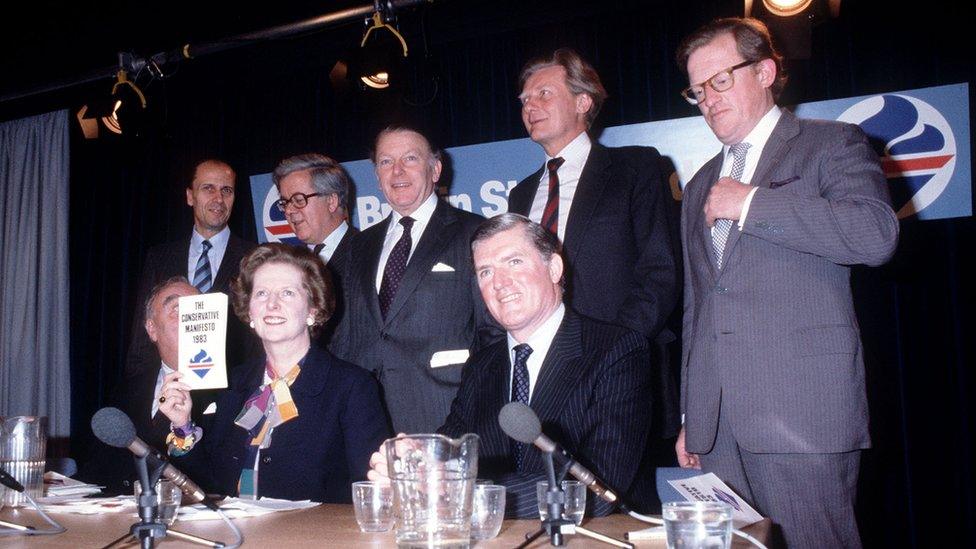
Margaret Thatcher with members of her cabinet in 1983, including Francis Pym (back row, third from left) and Michael Heseltine (back row, fourth from left)
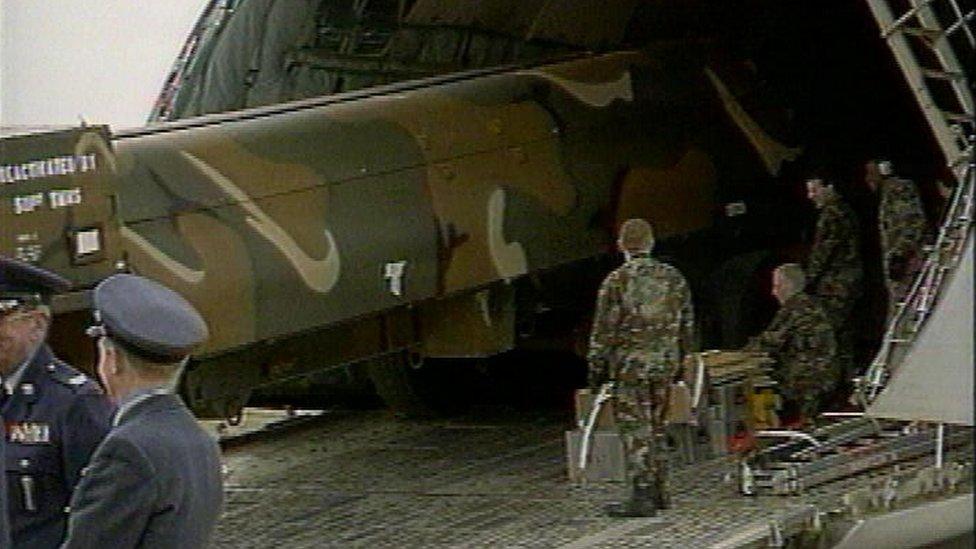
The UK allowed US nuclear warheads to be based at RAF Greenham Common
His answer was to insert a small number of armed RAF servicemen among the Americans, so that any determined demonstrator who managed to penetrate the perimeter fence and get past a screen of unarmed police "would finally confront an armed British serviceman rather than an armed American."
Nuclear weapons began to be removed from RAF Greenham Common after the Intermediate Nuclear Forces (INF) treaty between the US and the USSR was signed in 1987.
The last of the missiles left the site in 1991, and the campaigners left the site when the last perimeter fences were taken down in 2000.
The women left the camp 19 years to the day after the original protesters arrived.
- Published21 July 2016
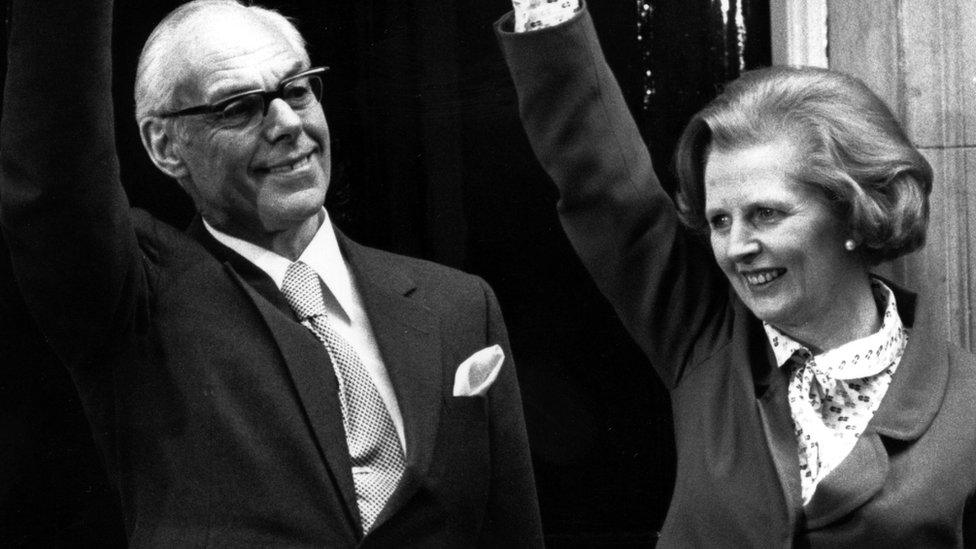
- Published21 July 2016
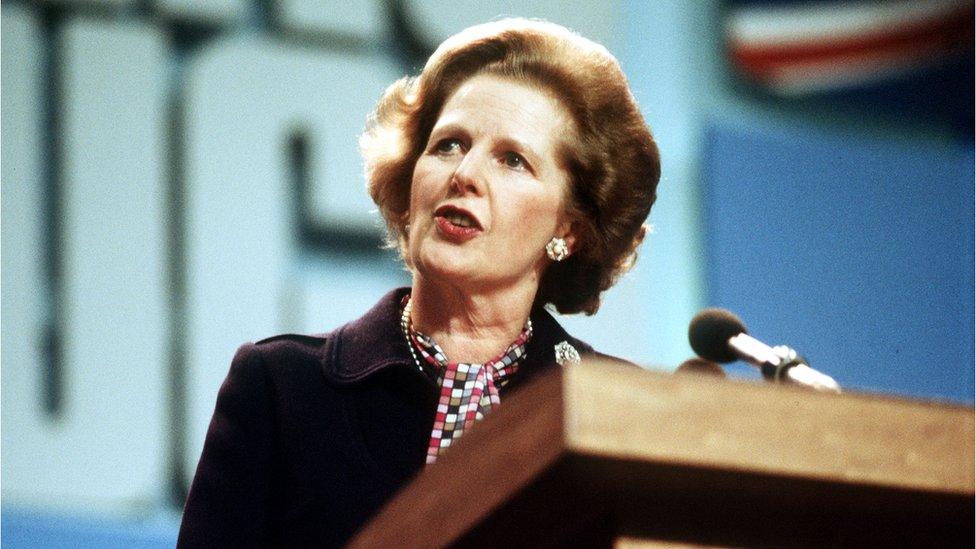
- Published8 April 2013
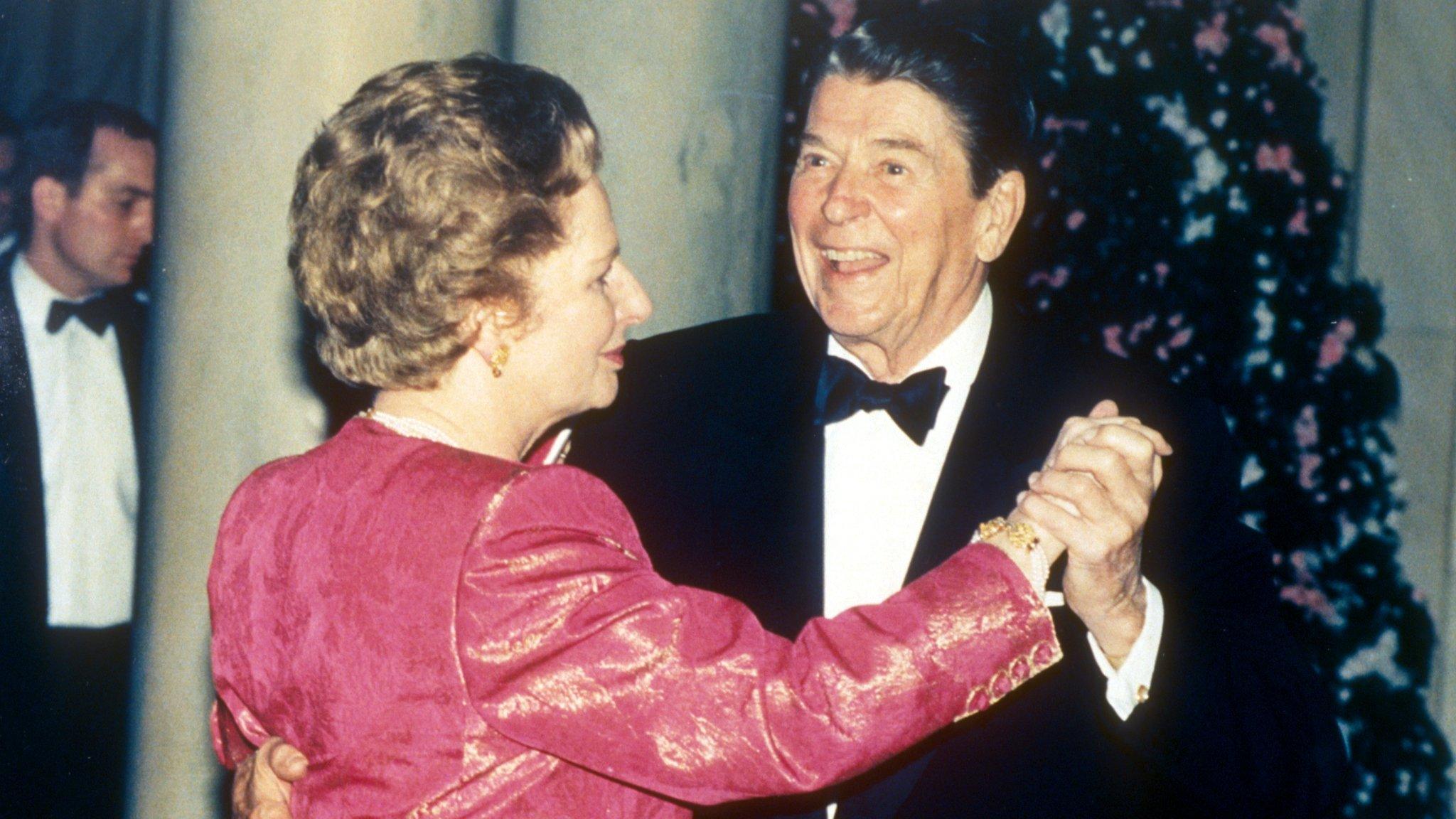
- Published30 December 2014
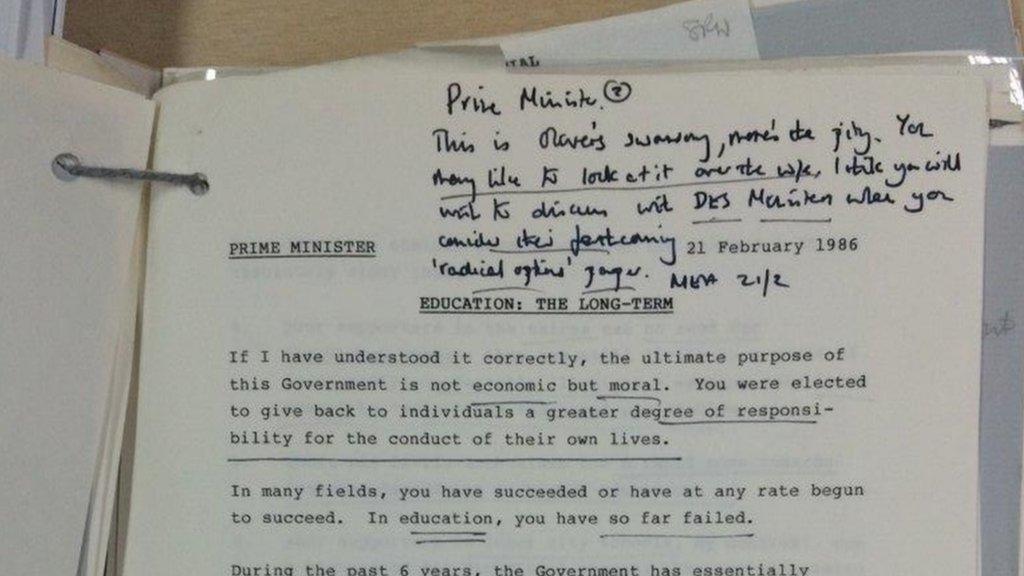
- Published19 February 2016

- Published30 December 2015

- Published30 December 2015
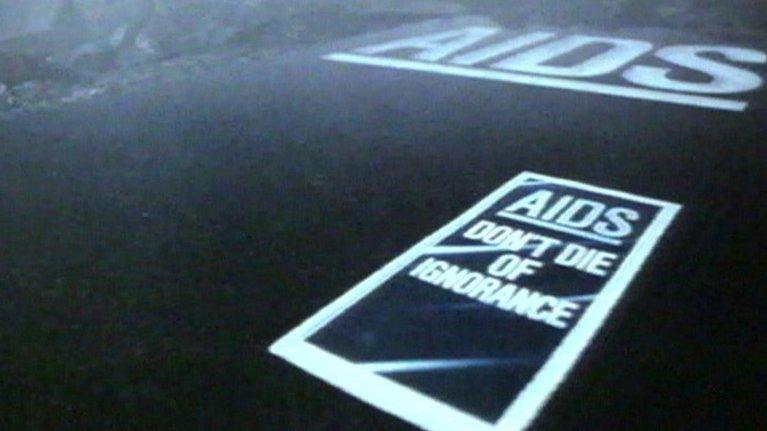
- Published10 October 2015
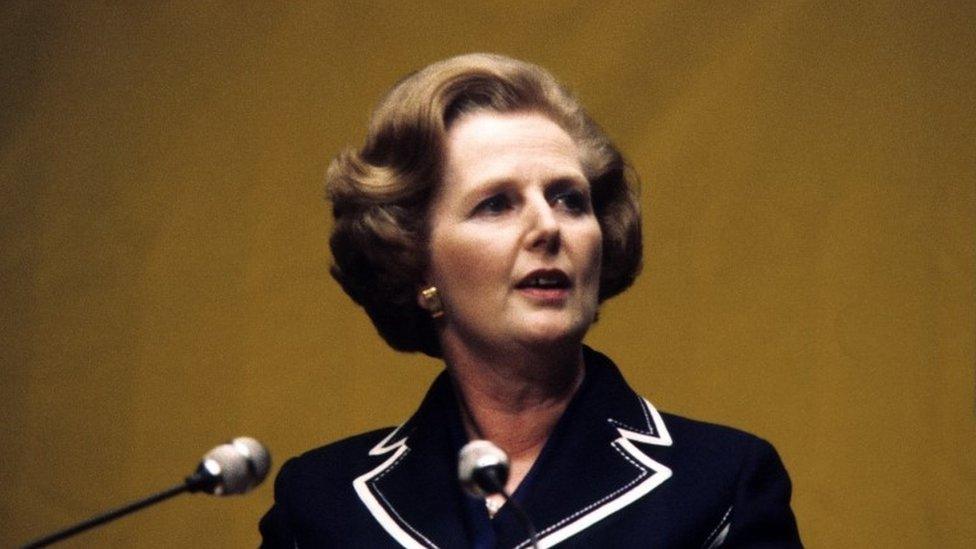
- Published30 December 2015
